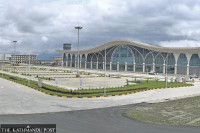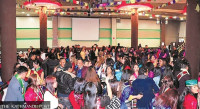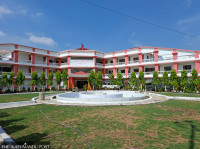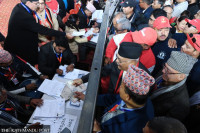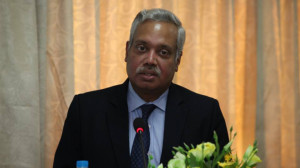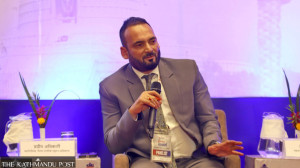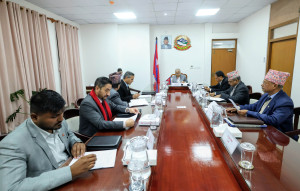National
ICOMOS Lumbini conference bolsters Tilaurakot’s case amid deferred World Heritage bid
Nepal presented a detailed, evidence-backed case at the conference, illustrating Tilaurakot’s historical and archaeological importance to gain broader international support for UNESCO nomination.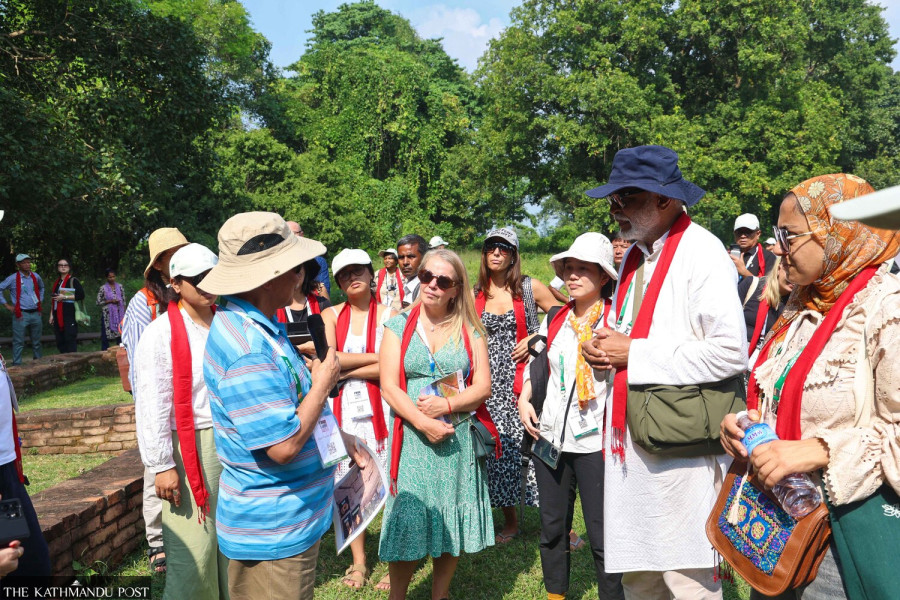
Manoj Poudel
At the recently concluded 60th General Assembly and International Scientific Conference of the International Council on Monuments and Sites (ICOMOS) held in Lumbini, Nepali participants succeeded in using the global platform to dispel longstanding confusion surrounding the ancient Shakya capital of Tilaurakot and laid stronger groundwork for its future nomination as a UNESCO World Heritage site.
The General Assembly and International Scientific Conference of the ICOMOS was held from October 11 to 18 in Lumbini, the birthplace of Gautam Buddha.
During the ceremony, Vice Chairman of Lumbini Development Trust Lharkyal Lama did not mince his words while lobbying heritage experts and conservation scientists attending the conference for the inclusion of Tilaurakot as a World Heritage site. “At the Paris discussions in July we were told by ICOMOS officials: ‘Go and convince India, explain Tilaurakot properly, behave better.’ If that is the case, then why do we need UNESCO? Why do we need ICOMOS? India alone would suffice.”
His rhetorical salvo stunned the assembly of ICOMOS officials from Belgium, Europe, the USA, Africa and the Asia-Pacific region, prompting a serious and reflective silence.
Heritage experts and archaeologists attending the scientific symposium underscored the site’s significance and clarity of evidence. “In Tilaurakot we now have the scientific proof, and we are placing it squarely before the international community,” said former Director General of the Department of Archaeology, senior archaeologist Kosh Prasad Acharya. He explained that while technical reasons prevented last July’s bid from being approved, the conference successfully “internationalised the debate and ripped apart the myths” surrounding Tilaurakot’s identity and status.
Tilaurakot—situated approximately 27 kilometres west of Lumbini in the district of Kapilvastu—has long been identified as the place where Prince Siddhartha spent 29 years of his early life before renouncing the world and becoming Buddha.
UNESCO had placed Tilaurakot on its tentative World Heritage list in 1996. Since then, multiple attempts to elevate its status have failed. The nomination was revived in 2023 with renewed political and institutional support, but this session has again ended in frustration.
An archaeological survey of Tilaurakot, started in 2013, has unearthed evidence suggesting that the sites described by the two ancient travellers align with what has been buried underground for centuries. During excavations in 2015, archaeologists unearthed 494 ancient “punch mark” coins in an earthen pot. And in 2016, archaeologists found remnants of houses, roads, walls and wells after three years of digging. Similarly, post holes were also found in the area during earlier excavations.
Nepal formally submitted a nomination dossier for Tilaurakot on January 31 this year. Based on the findings and its historical as well as archaeological significance, Australian heritage expert Duncan Marshall with support from British archaeologist Robin Coningham, Kai Weise, Yukio Nishimura, Yani Joshi and Basanta Bidari, prepared the nomination dossier for Tilaurakot. Marshall had previously prepared the nomination dossier for the Kathmandu Valley.
But at the 47th session of the UNESCO World Heritage Committee in Paris, the proposal was not approved. The technical advisory body ICOMOS recommended “deferral,” and no member state proposed an amendment in Nepal’s favour, leaving the nomination stalled.
During the recent Lumbini conference, delegates visited Tilaurakot and nearby teaching sites. “We took every overseas delegate to Tilaurakot and the adjacent Buddhist-heritage site of Nigrodharam so that they could see the place for themselves,” said ICOMOS Nepal President Gyanin Rai. “This has left a positive imprint on foreign experts; next year we expect them to raise the issue themselves in favour of Tilaurakot.”
The conference drew 222 foreign delegates from 67 countries across five continents, along with over a hundred Nepali participants. More than 500 others joined online. Attendees included archaeologists, architects, engineers, heritage scientists and researchers from countries as diverse as Zambia, Sweden, Ecuador and Australia.
The conference featured 36 panel discussions and 190 scholarly papers covering archaeology, heritage management, architecture, stone conservation and cultural preservation. ICOMOS president, Belgian Professor Teresa Patricio, noted that the discussions in Lumbini were “very effective” and said their influence would soon manifest across global heritage conservation efforts.
What makes this moment particularly significant is the open confrontation of the “confusion” that has dogged Tilaurakot’s World Heritage bid. Several media reports and Nepal’s senior officials named India’s objections as a major obstacle. They claimed that India’s objections and Nepal’s diplomatic shortcomings were to blame for the outcome.
What the Lumbini event achieved, the organisers believe, is reclaiming the narrative: showing that the archaeological evidence, scientific work and documentation are robust; that the heritage, tangible and living, is solidly anchored in Nepali territory; and that the international community now recognises the importance of revisiting the issue.
Professor John Peterson, head of the ICOMOS International Mission that studied Tilaurakot earlier, described the site as a place of exceptional historical significance. Peterson, who also chairs the ICOMOS International Committee on Archaeological Heritage Management, said he had personally recommended that Tilaurakot be inscribed on the World Heritage List and expressed disappointment that the proposal could not be approved this year.
“In every respect, Tilaurakot stands as an invaluable archaeological and cultural heritage site,” he said during his presentation in the recent conference, highlighting the site’s authenticity, well-preserved urban layout, and its direct association with the life of Prince Siddhartha before his enlightenment.
Local stakeholders are also buoyed by other signals of recognition. Earlier in February 2025, the government issued a postage stamp depicting a 2,800-year-old punch-marked coin from Tilaurakot, underscoring the heritage significance of the site.
The recent conference in Lumbini allowed for Nepal’s side to present its case unambiguously, face to face, to global experts. “This conference has been used as an opportunity to knock down the myths around Tilaurakot and set the stage for positive results in the coming days,” said Acharya. Nepal prepares for a renewed submission of the nomination dossier at the 48th session of the UNESCO World Heritage Committee.



 14.12°C Kathmandu
14.12°C Kathmandu
